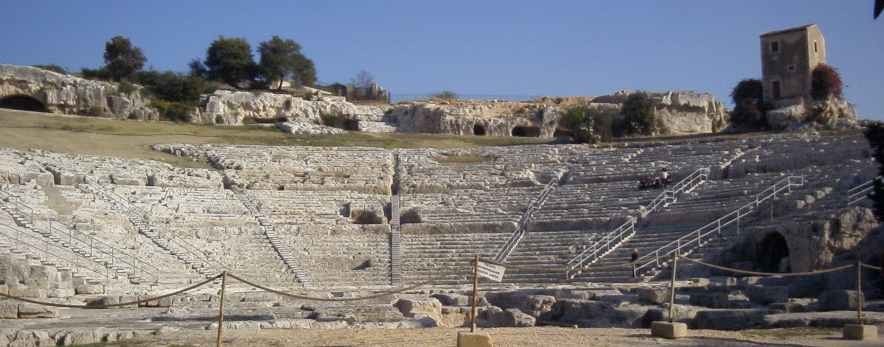 Aeschylus' shop floor
Aeschylus' shop floor
Like Catania and Palermo, we saw too little of Syracuse, the most famous of the classical cities of Sicily and home to the original absent-minded professor, Archimedes, the inventor of pi, but not pizza, as far was we know. Another "A" team inventor from Syracuse is Aeschylus who, for all practical purposes, created drama by adding the second actor to what had been up to that time a religious dance.
Our visit started at one of the largest Greek theaters in the world, cut from the bedrock in the 5th century BC. Some of Aeschylus's plays were presented here for the first time. Like many Greek theaters, this one was altered by the Romans to allow gladiatorial contests (which required crowd protection from the wild animals on stage).
Later the Romans built a huge amphitheater nearby, not as impressive as the Roman Coliseum, but still well preserved since, like the Syracuse's theater, it was hewn out of the bedrock so there weren't a lot of valuable stones to steal for later building projects.
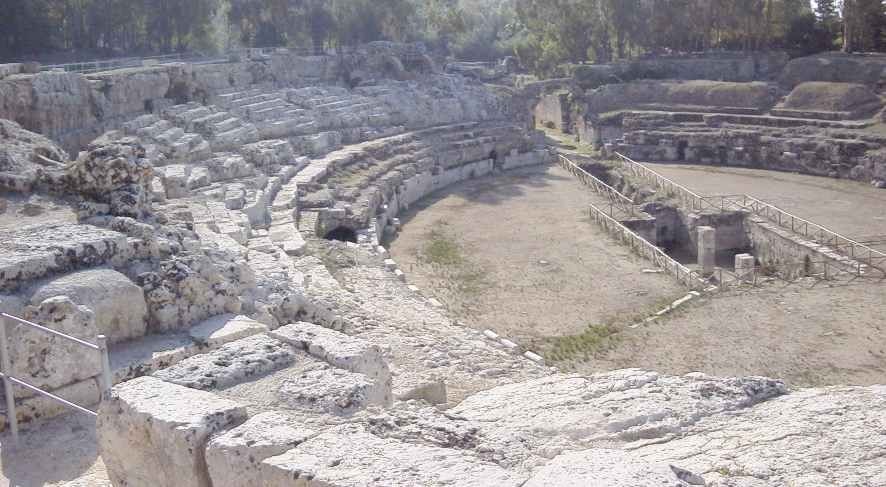
Between the theater and the ampitheater is the remains of an abandoned quarry out of which came many of the buildings of Syracuse. Caves would emerge as limestone was removed, usually leaving covered structures which would be later crushed by Sicily's earthquakes. Below is one that has survived and is know as the Ear of Dionysius (you have to imagine a painting of the wine god showing him with ears like Mr. Spock on Star Trek.) The name was given by the painter Caravaggio during his Sicilian visit in the early 1600s. Behind this entrance winds the cave with interesting acoustics.

This now mostly open limestone quarry has been converted into a delightful garden.
Next we crossed to the Island of Ortygia where we visited a number of "newer" sites. We wound our way through medieval streets like the one below:
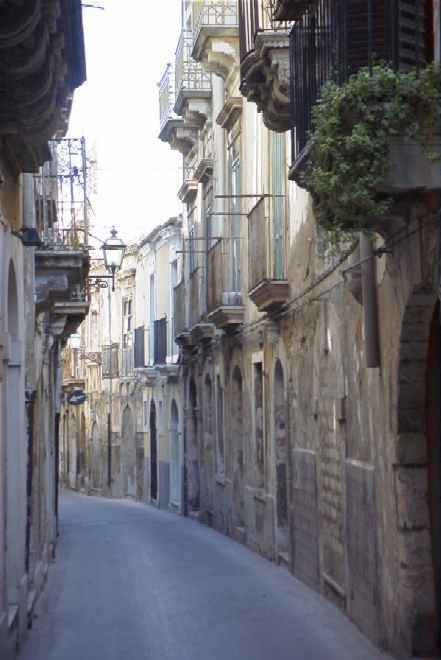
One of our first stops was at a square with a fountain designed to honor the Fountain of Arethusa which is found nearby.
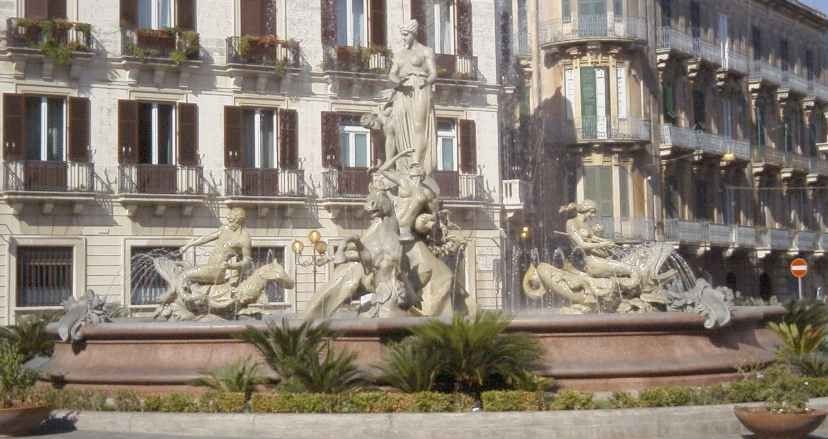
Here's a close-up designed to titillate. Don't ask what the horse is thinking:
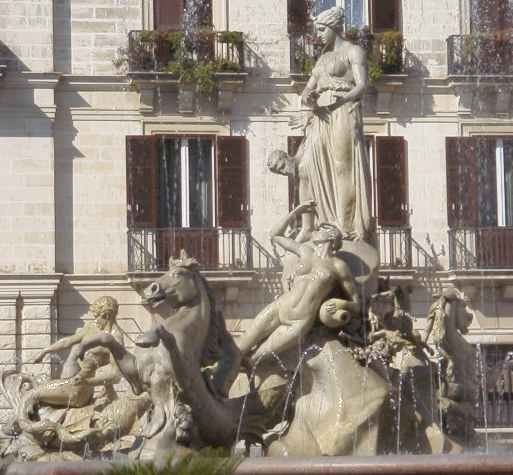
Next we visited a church dedicated to St. Lucy. Since she is the patron of Syracuse, there are many churches and other sites dedicated to her. This one was formed on the site of an old temple, parts of which can be seen in the picture below, now incorporated into the church wall:

Here's the altar end of the same church which will give you the view of the accumulation of pieces that make up this structure:
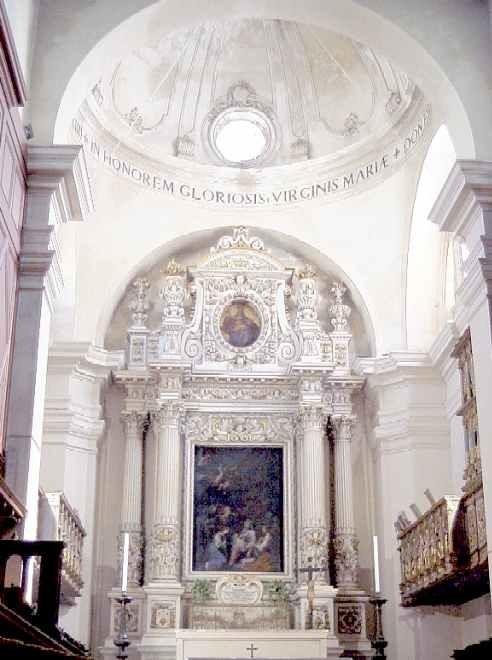
Next we went to the Piazza Duomo, a "square" in the shape of a ship. Unfortunately, a movie was being filmed at that location so all we got was the photo below of the Cathedral (Duomo) behind a WWII truck being used in the film.
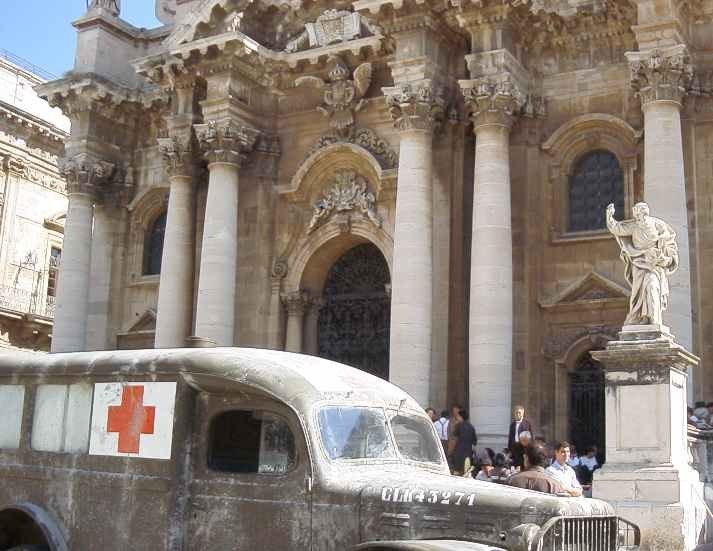
The cathedral is on a site used for worship since the 6C BC, starting as a temple to Athena. Pieces of the temple were incorporated into a Christian church about 1400 years later and some of the original Greek columns are visible inside and outside of the present structure. It may have been a mosque during the Arab rule before the Normans converted it back to a church. What we see in the picture above (besides the truck) is the Baroque front created after the 1693 earthquake destroyed the front of the building.
Finally we walked back to our bus by the beautiful Syracuse harbor.
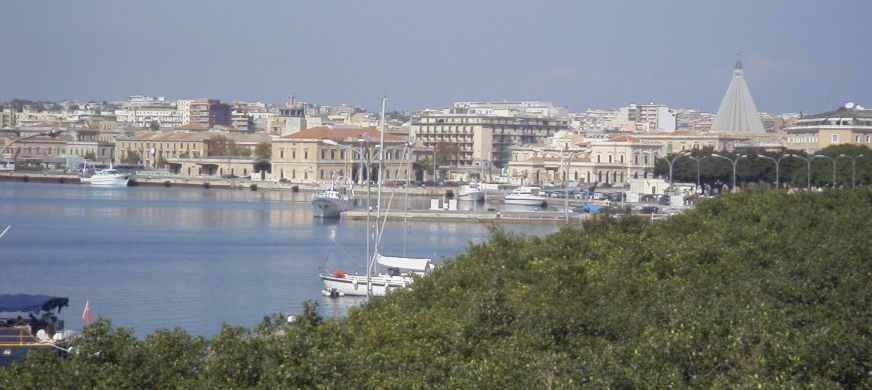
In the upper right is a new church looking like a concrete cone. This is the Santuario Madonna Delle Lacrima, built on the spot where a plaque of the Virgin wept for four days in 1953. We will return to Syracuse someday to see what we missed, but I'm not sure we'll see this. I'm sure she won't cry over it.
We then took our last bus trip back to Catania where we saw a few sights already explained on our Catania page.
The next morning, Pietrina and I struck out on our own to the "non-touristy" town of Modica. Please join us by clicking here.
Where do you want to go today? Here's a few choices:
